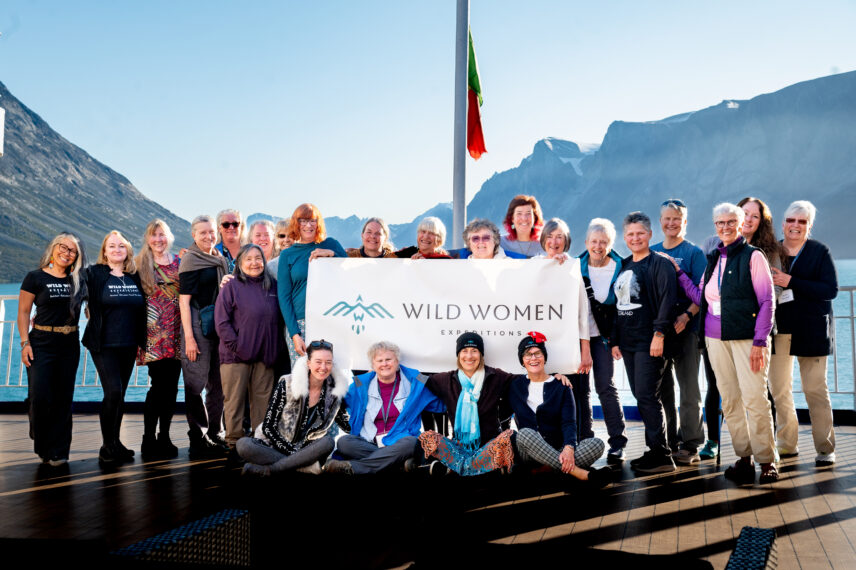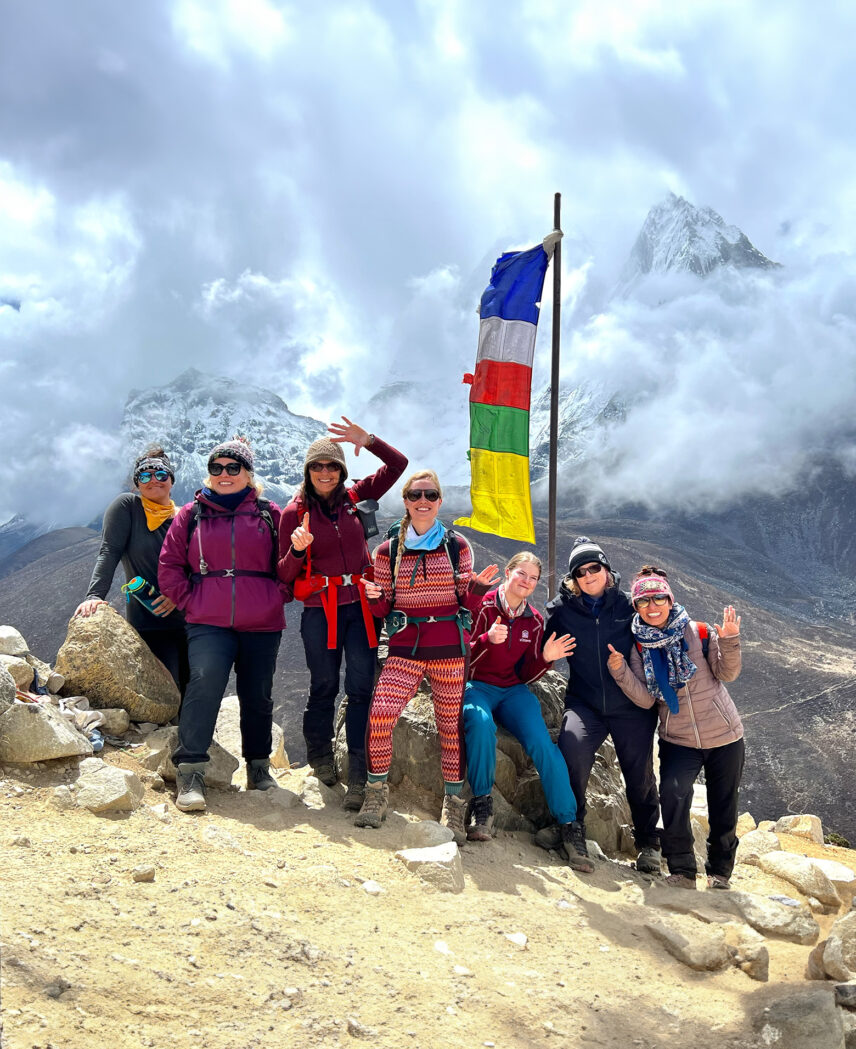As I took one last look over my shoulder, the people of Salluit were still waving. Some from shore, and others from their tin fishing boats as they circled our ship, bidding us farewell like close friends whose time to leave had come too soon. As the ship pulled away, I was at a loss for words and overcome with a sense of gratitude. I had just experienced one of the most meaningful travel days of my life, and it was apparent that this would take some time to absorb. Reluctantly, the Ocean Endeavour set sail to continue our Arctic travel northeast, out of the narrow fjord that had led us to Salluit earlier that morning.
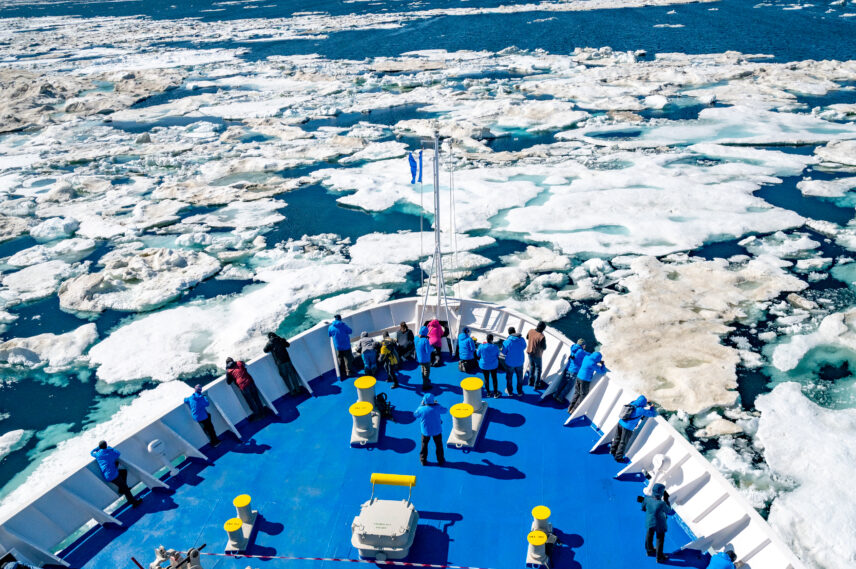
Why do we travel?
To learn, explore, and discover things about ourselves, other cultures, and life? There are SO many reasons why travel is good for the soul, and every now and then, if you are lucky, you will have one of those travel days that completely fill you to the brim.
Our day in Salluit was one of those days.
But this journey was more than just one day. It was a series of moments, connections, sharing, learning, and coming to understand that the true heart of the Arctic is the people who inhabit it.
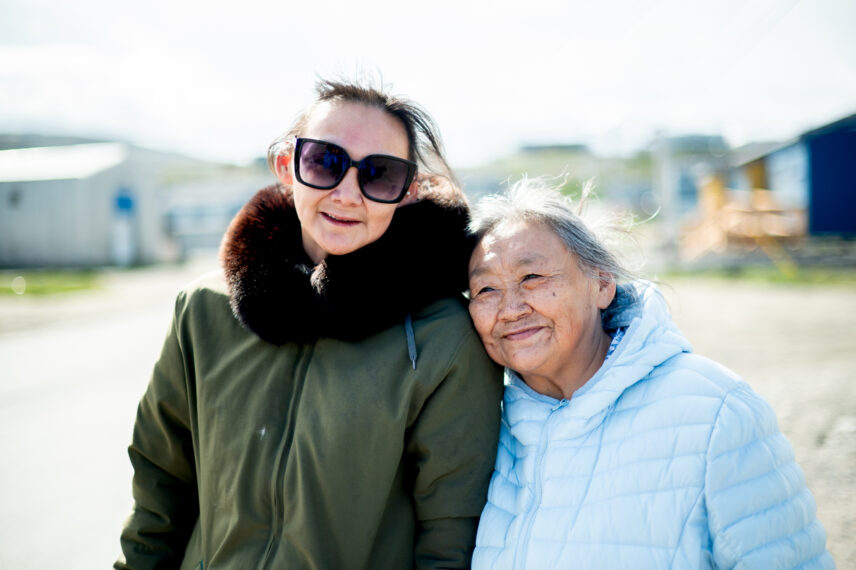
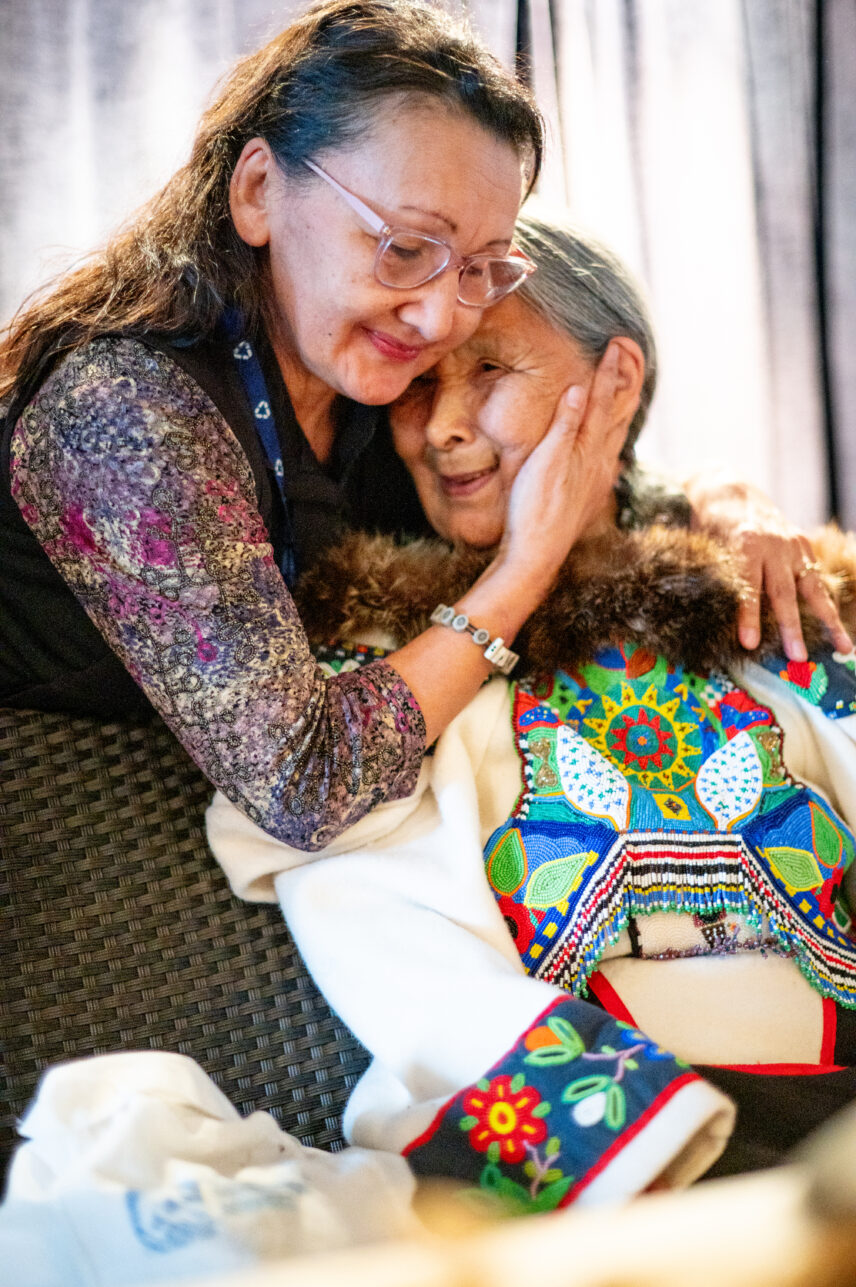
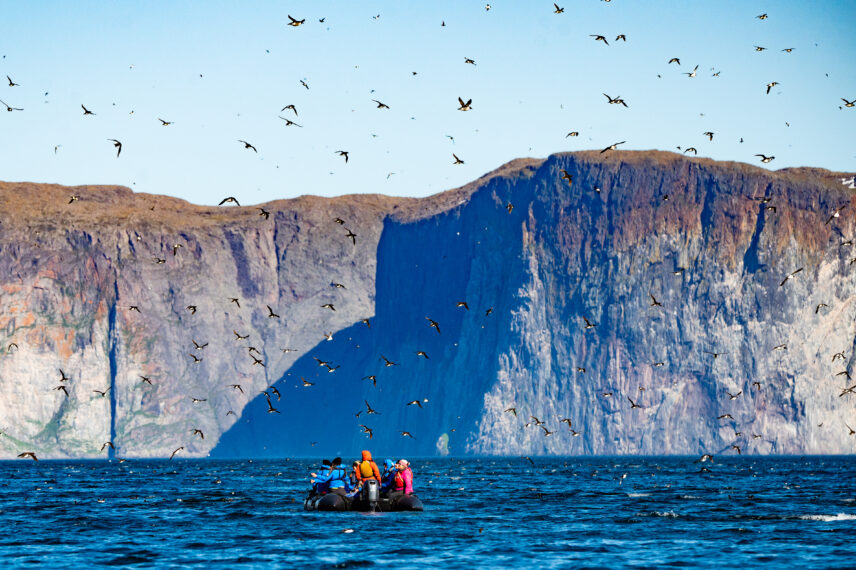
Kimmirut, a remote community of roughly 450, was our first true taste of the kindness of our Inuit hosts. Our zodiacs had barely pulled ashore, and we were welcomed by the local community, which was eager to share their home with us. We walked, guided by our hosts, through the tiny village of brightly coloured homes and steeply pitched rooflines. Some guests opted to head out into the hills to see the open tundra, and others went to the community hall where two elders were preparing Bannock and hot coffee. Entire families came by on their quads, eager to meet the visitors, while others stood patiently by the shore chatting with the guests, waiting for the tide to retreat and the clam digging to begin.
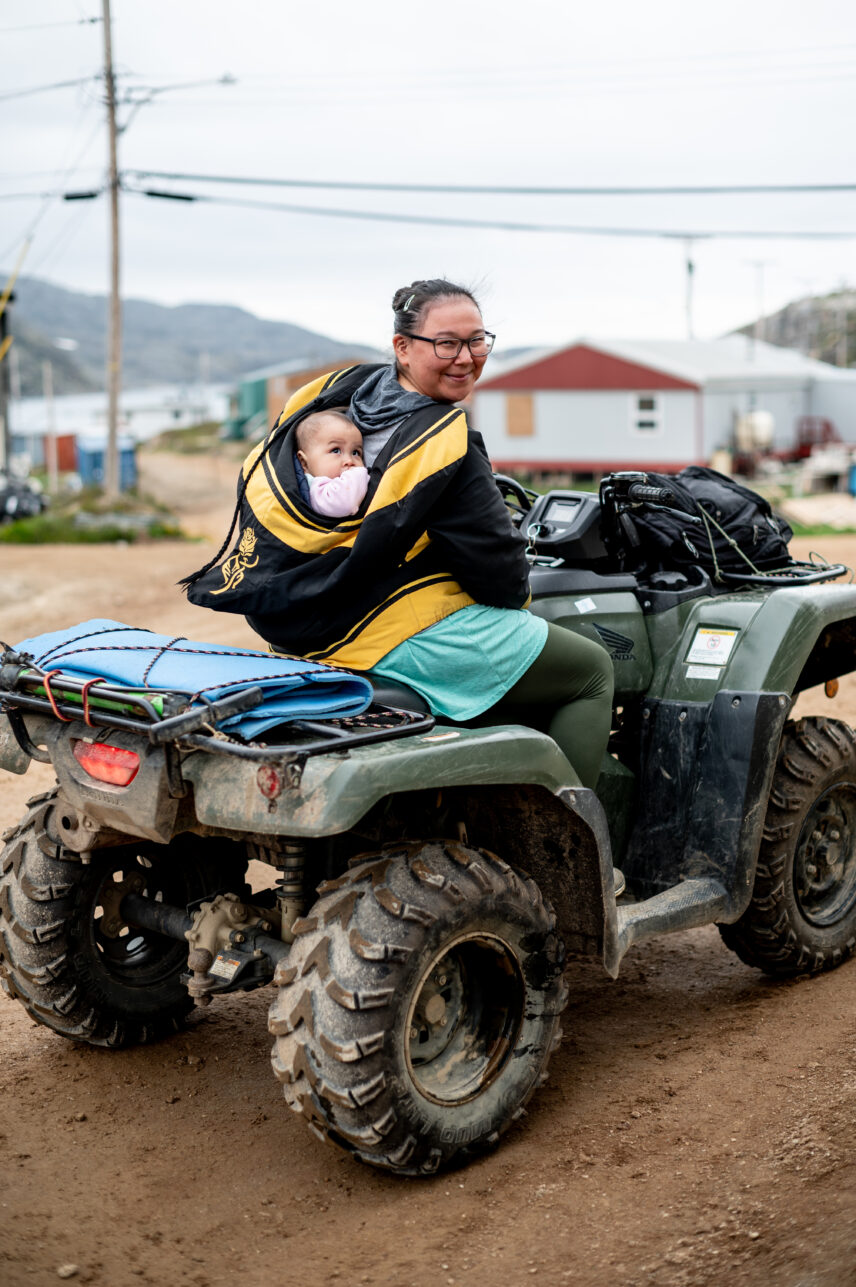
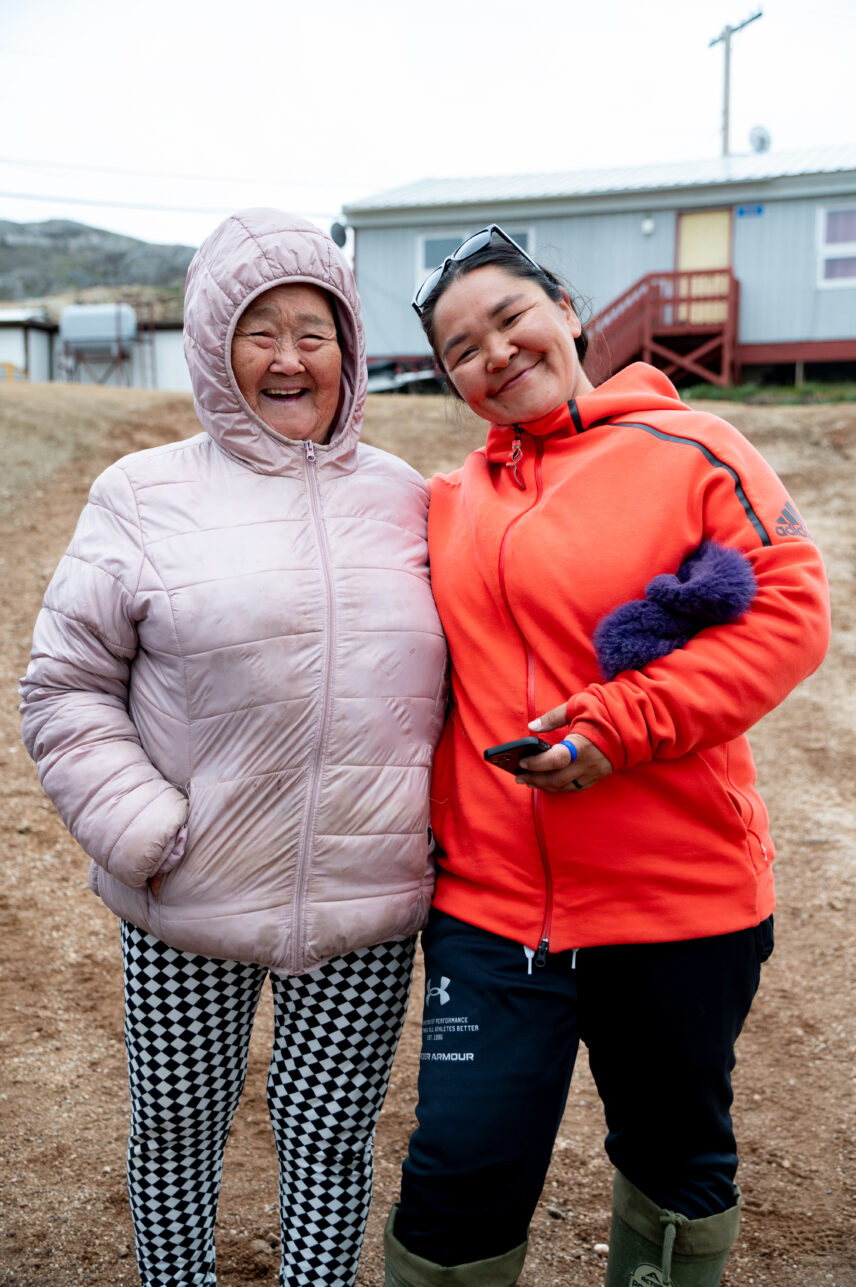
Kinngait was our next chance to be welcomed by our Inuit hosts. Once home to the Dorset and Thule people as far back as 1000 BCE, Kinngait is now the thriving ‘Capital of Inuit Art’ and home to about 1400 Inuit. Our day here began with a hike across soft tundra amidst stubby, resilient wildflowers and a chance sighting of a Bowhead whale – a perfect arctic morning.
Our hosts then led us on a tour of the incredible Kinngait art studio, where we could watch as locals demonstrated the process of Inuit printmaking. The studio opened in 1957 as a way for the local Inuit population to obtain a sense of autonomy and independence from the Hudson’s Bay Company. It is a thriving, creative outlet and source of consistent income and joy for this deeply artistic community. That evening, our expedition team invited one of Kinngait’s elders and several community members on board to share their traditional stories, local knowledge, and throat singing with us before saying our goodbyes.
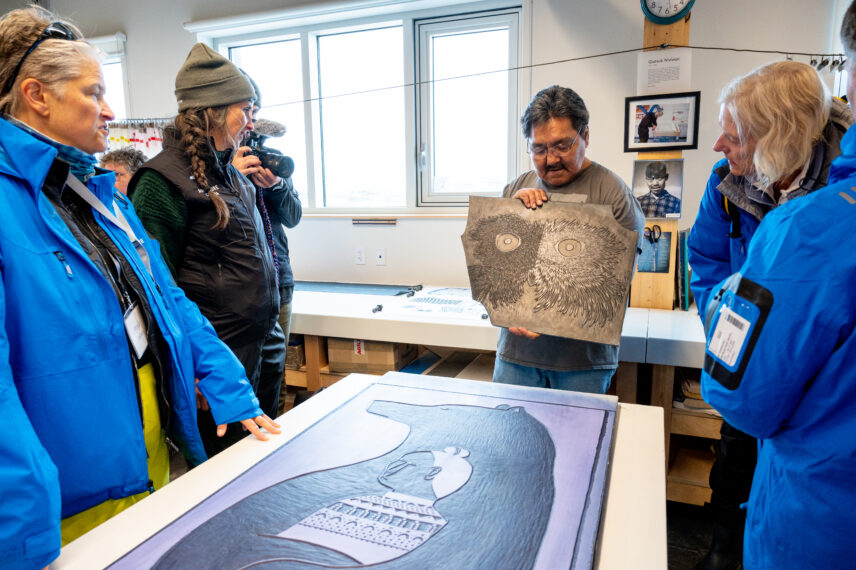
Of course, there were icebergs, stunning landscapes and all the beautiful
natural elements as they have existed for millennia, and while it’s never a
guarantee, there was certainly wildlife.
The hard-working expedition scouts would spend hours on deck and announce any sitings! We would hurry outside, hoping to catch a glimpse, or a photograph, of their findings. We saw walrus, caribou, minke, fin whales, and even a few humpbacks, as well as the distant water spouts of Orca. In fact, there were moments on this voyage where you felt like you had been transported into an episode of a Planet Earth Documentary.
We fully immersed ourselves in one of these scenes when we reached Digges Island, home to hundreds of thousands of Thick-Billed Murres. These birds filled every inch of the sky around us, and the sheer cliffs above the sea were coated with chicks perched on narrow ledges. At only three weeks of age, these brave chicks launch themselves from heights of up to 500m into the sea below.
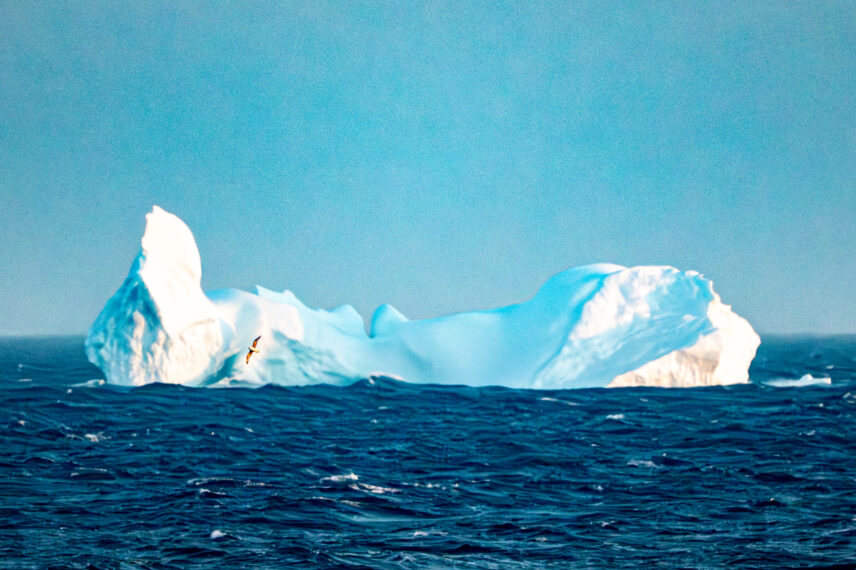
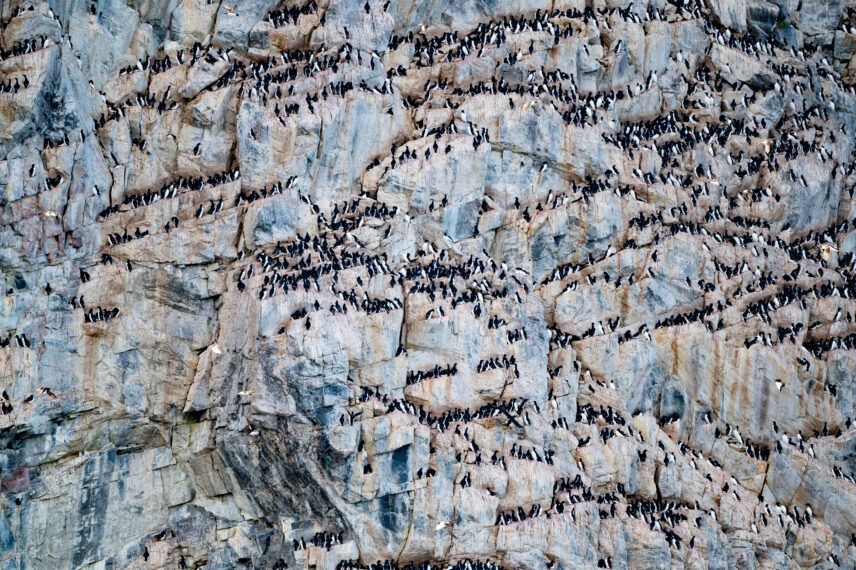
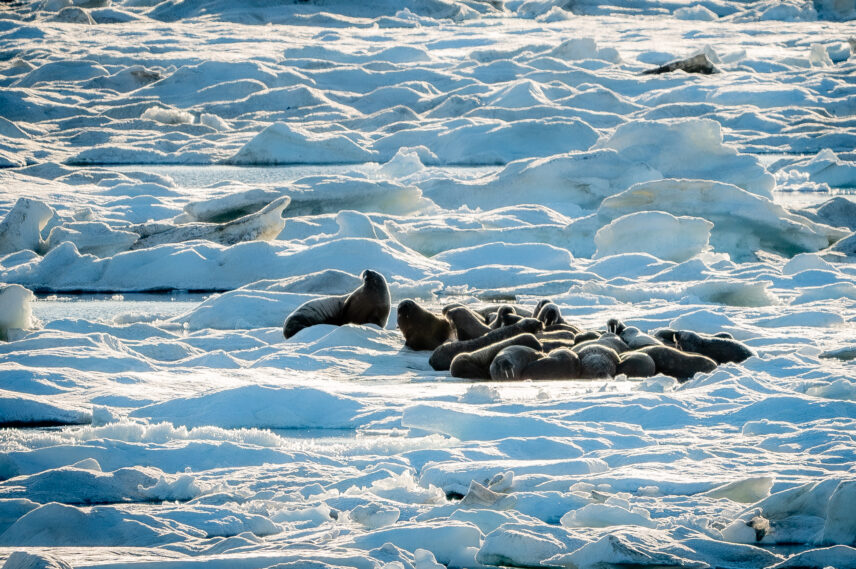
Our up close and personal encounter with glacial ice happened once we reached Greenland, in a fjord so long and narrow that one could have mistaken the surroundings for Middle Earth, out of a Tolkien novel.
Our zodiacs were dwarfed by glacial ice, the height of apartment buildings, and cloud-piercing peaks rising from the ocean floor. Deep groans from within the ice gave the sense that it was alive, breathing and shifting under the weight of thousands of years of built-up pressure.
Just as we were about to leave, a thunderous crack sent tens of thousands of tonnes of ice tumbling into the sea before our eyes. As the ice collapsed, hundreds of Arctic Terns swooped in amidst the chaos to feast on the freshly stirred-up plankton. Again, you felt like you were in a nature documentary, but the cold blast of air from the tumbling ice and the ripple effect of the waves rocking the zodiac brought you back to the present moment, as surreal as it may have been.
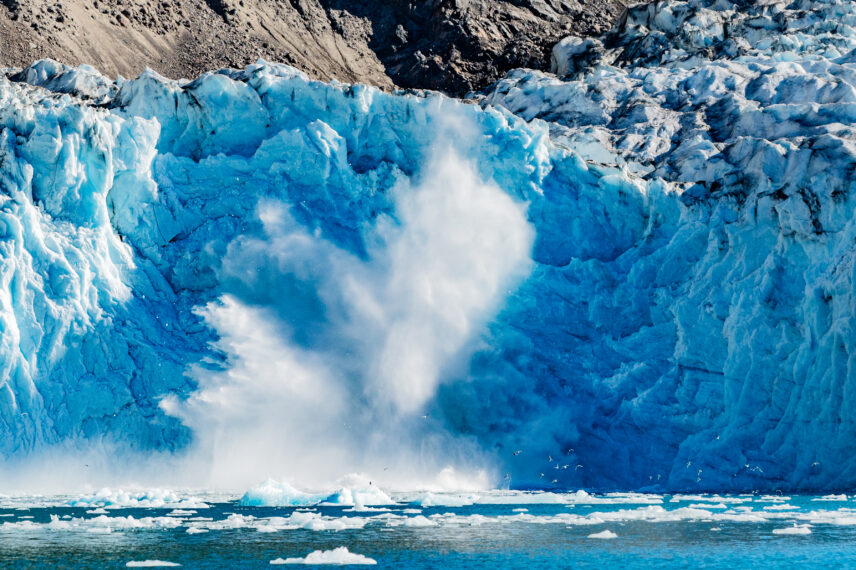
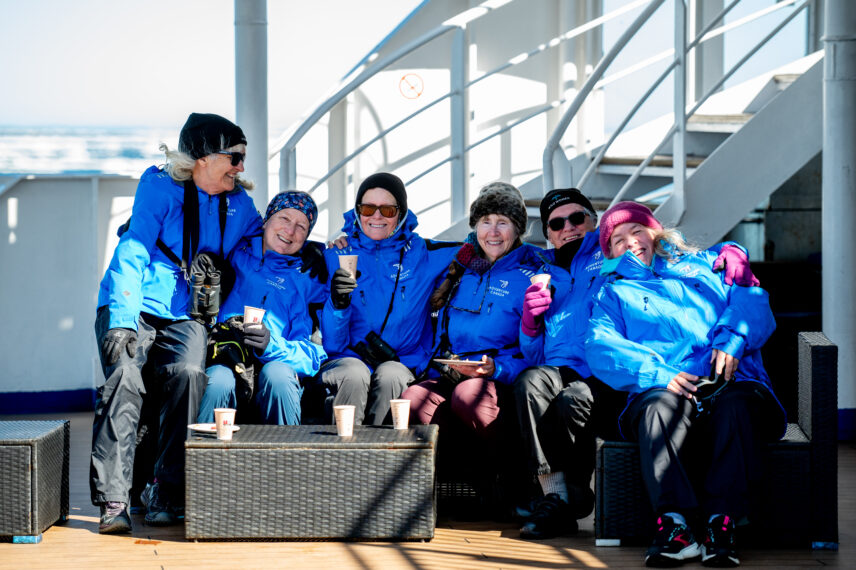
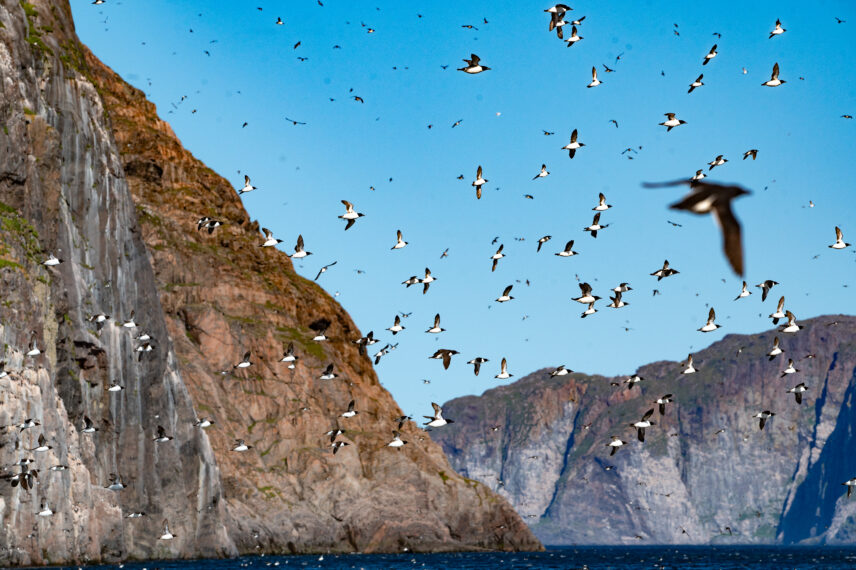
Salluit was our last community visit before leaving the Canadian Arctic to
cross the open waters of the Davis Straight to Greenland. Nestled deeply in the foothills of a narrow inlet at the northern edge of Nunavik, it is
surrounded by tundra and sea, which are still thriving with caribou and Beluga.
This quiet community of 1500 is as remote as Arctic villages get. Prior to our visit, Salluit had never welcomed more than ten guests at any given time! No roads lead to Salluit, and other than a one-year barge of supplies, the Inuit here live intertwined with nature, harvesting caribou, whales, clams, berries, and other local sustenance.
Our visit was almost a year in planning between the local Salluit government and our expedition team. This would be the first major visit of its kind for this community and it needed to be done sensitively, respectfully and cooperatively.
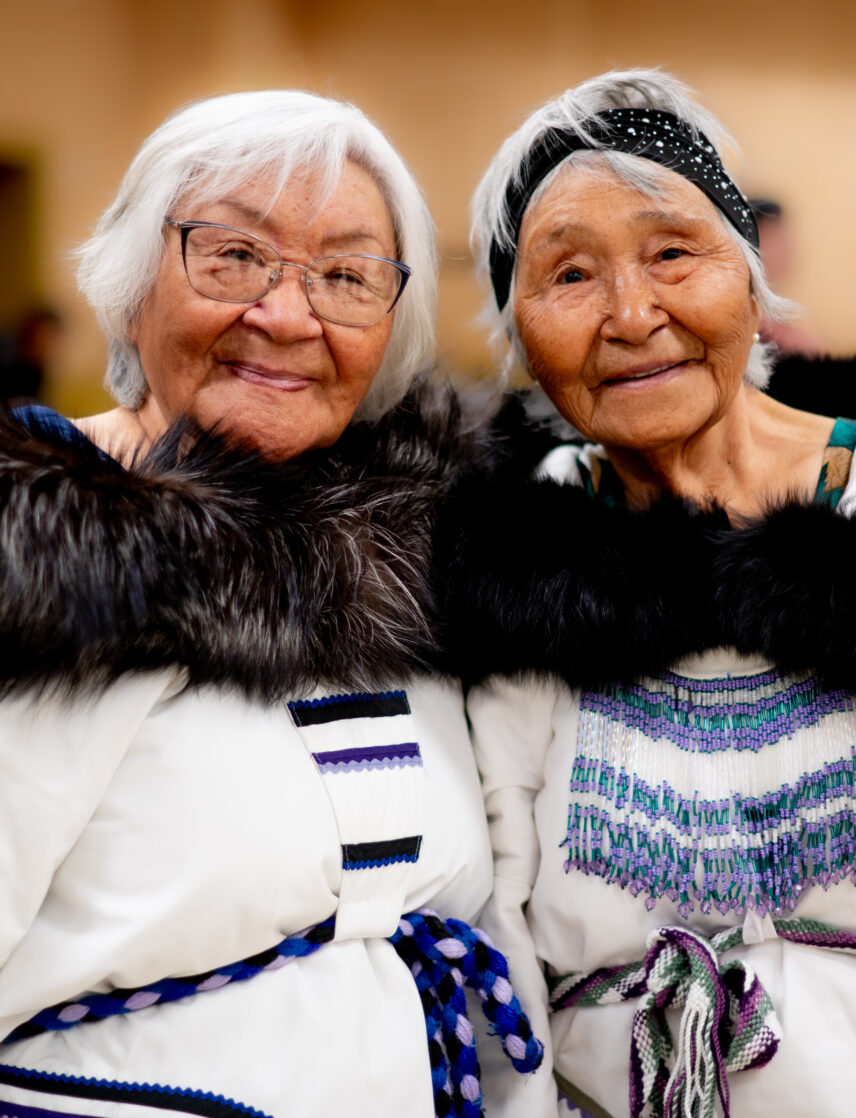
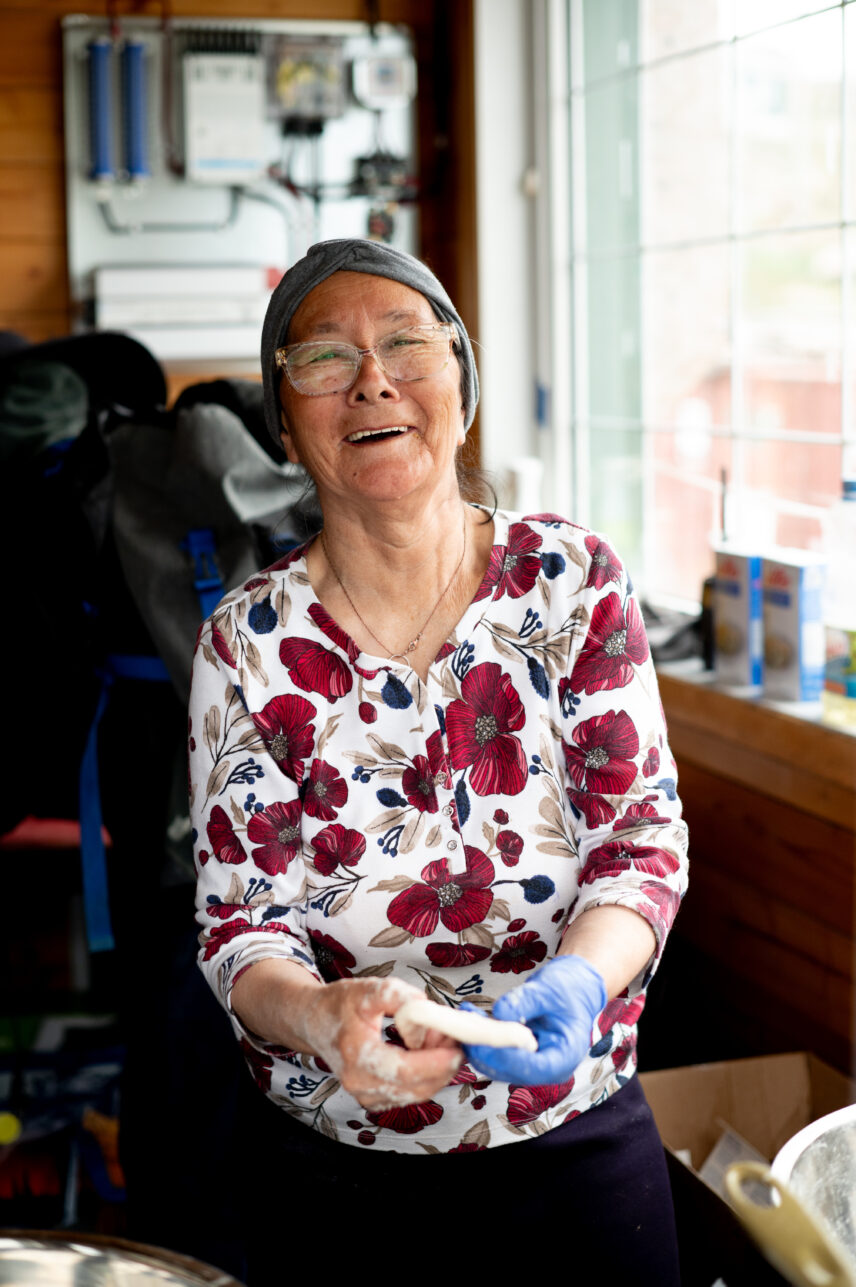
I am almost at a loss for words to describe the sense of celebration,
connection and shared joy that was felt on this day between our 150
passengers and our local hosts.
We were welcomed with wide open arms from the moment we arrived on shore. The time and great lengths the community had gone to to prepare for our visit were immediately apparent. We were led to a central gathering where we were offered a feast of fresh Mattaaq (Beluga) and clams. We danced together with clasped arms and laughter, and women dressed in traditional Amauti’s twirled us to the beat of local musicians.
We were given performances of Inuit throat singing by young and old and a blessing by the community elder in Inuktitut, thanking us for our visit and honouring the land on which we had all come together. In turn, through an initiative called Project North, the expedition team presented the local youth with nine crates of hockey gear as a way of showing our appreciation for allowing us to be part of their remote world for a brief time. The atmosphere was light; the energy was palpable. There was nothing we needed to do other than enjoy one another’s company and celebrate the opportunity of worlds typically vastly apart coming together.
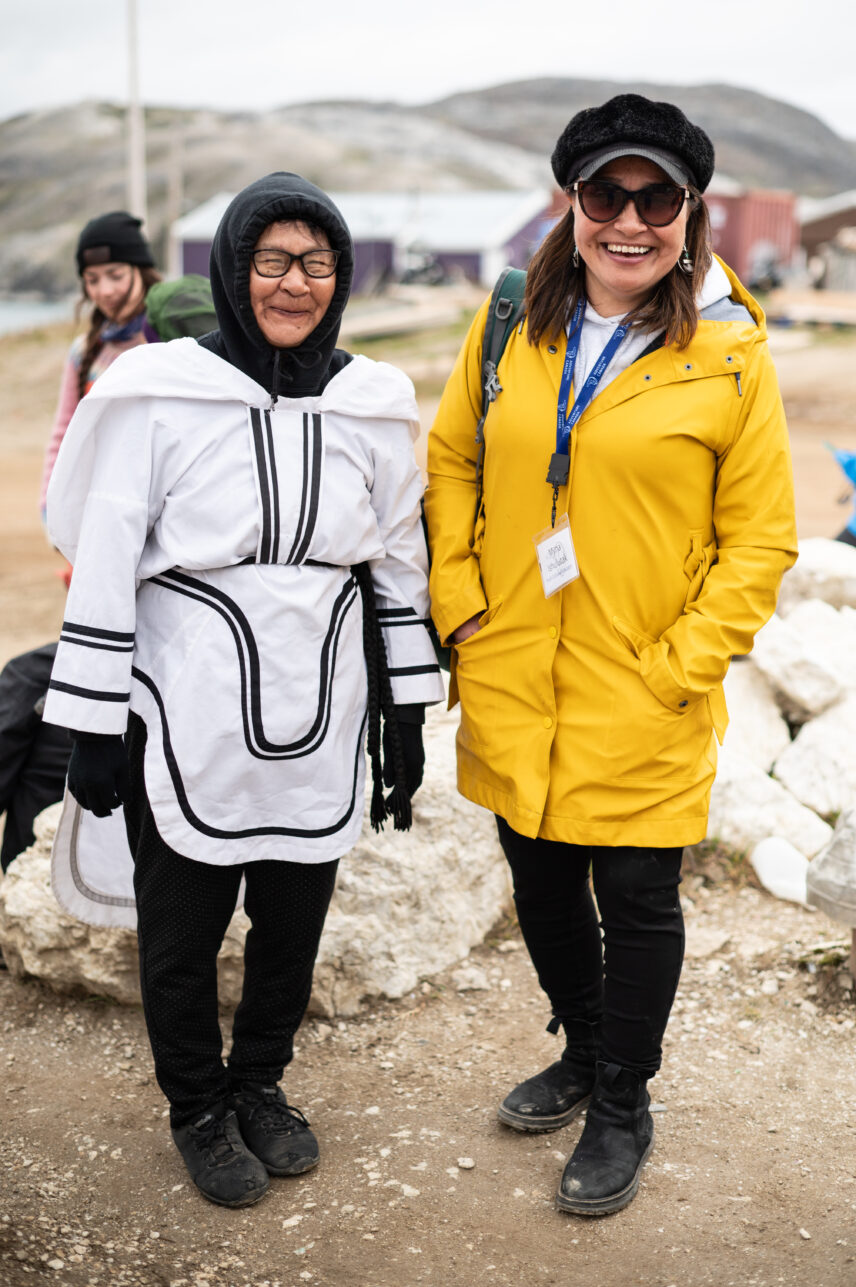
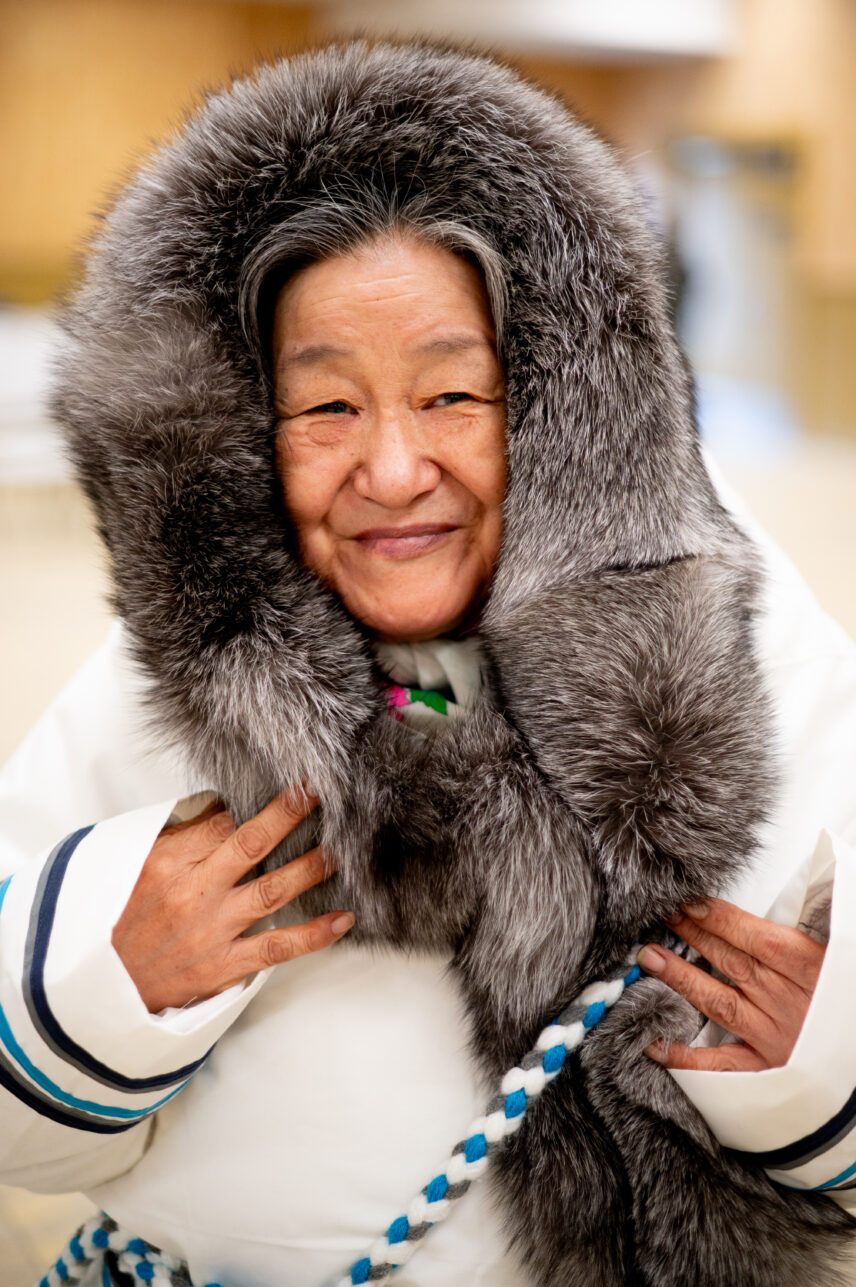
When it was time to leave, hugs were abundant, and locals came to the waterfront to bid us farewell like we were about to become long-lost friends, just as they had in Kimmirut and Kinngait. Even though each visit and experience with our Inuit hosts was short, leaving felt tough each time.
Our journey through these Inuit homelands connected us to something deeper than our own selves, and we now needed time to reflect on the experience and how these moments of connection change us, fill us and shape our understanding of life, culture and our shared humanity.
THANK YOU to the Inuit of Salluit, Kinngait, and Kimmirut for your open arms and incredible hospitality and for sharing your world with us. This journey explored the true heart of the Arctic and will not be forgotten.
